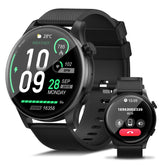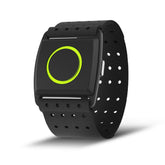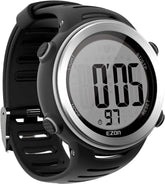Marathon Training Guide: A Holistic Approach
Training for a marathon is a significant commitment that requires careful planning, dedication, and the right tools. A holistic approach to marathon training encompasses not only a well-structured training schedule but also proper nutrition, injury prevention, and the use of technology to ensure a successful experience. In this comprehensive guide, we will explore these key components and highlight how tools like a marathon training watch, longest battery sports watch, and best GPS sports watch can support you throughout your journey.
Creating a Marathon Training Schedule
A well-structured training schedule is essential for building endurance and preparing your body for the marathon distance of 26.2 miles. Here’s a suggested 16-week training plan that gradually increases mileage and incorporates various types of workouts.
Weeks 1-4: Base Building
Goal: Establish a solid foundation for your training.
-
Weekly Schedule:
- Monday: Rest or cross-training (swimming, cycling)
- Tuesday: Short run (3-5 miles)
- Wednesday: Cross-training (30-45 minutes)
- Thursday: Medium run (4-6 miles)
- Friday: Rest
- Saturday: Long run (6-8 miles)
- Sunday: Recovery run (2-3 miles)
Weeks 5-8: Increasing Mileage and Intensity
Goal: Gradually increase your weekly mileage and introduce speed work.
-
Weekly Schedule:
- Monday: Rest or light cross-training
- Tuesday: Tempo run (5-7 miles at a challenging pace)
- Wednesday: Cross-training (45-60 minutes)
- Thursday: Short run (5-7 miles)
- Friday: Rest
- Saturday: Long run (10-12 miles)
- Sunday: Recovery run (3-4 miles)
Weeks 9-12: Peak Training
Goal: Build endurance and prepare for race conditions.
-
Weekly Schedule:
- Monday: Rest or cross-training
- Tuesday: Speed intervals (6-8 miles with intervals)
- Wednesday: Cross-training (60 minutes)
- Thursday: Medium run (6-8 miles)
- Friday: Rest
- Saturday: Long run (14-18 miles)
- Sunday: Recovery run (4-5 miles)
Weeks 13-16: Tapering and Preparation
Goal: Reduce mileage to allow your body to recover before race day.
-
Weekly Schedule:
- Monday: Rest
- Tuesday: Short run (4-6 miles)
- Wednesday: Cross-training (30-45 minutes)
- Thursday: Short run (3-5 miles)
- Friday: Rest
- Saturday: Long run (8-10 miles in week 13, taper down in subsequent weeks)
- Sunday: Recovery run (2-3 miles)
Nutrition Plans for Marathon Training
Proper nutrition plays a crucial role in supporting your training regimen. Here are key nutritional strategies to consider:
1. Carbohydrate Loading
Carbohydrates are the primary fuel source for endurance athletes. In the weeks leading up to the marathon, focus on increasing your intake of complex carbohydrates (whole grains, fruits, vegetables) to build your glycogen stores.
2. Balanced Diet
Incorporate a balanced diet that includes:
- Proteins: Essential for muscle repair and recovery (lean meats, fish, legumes).
- Fats: Healthy fats (avocados, nuts, olive oil) can provide sustained energy.
- Hydration: Stay well-hydrated before, during, and after runs. Electrolyte drinks can be beneficial for longer training sessions.
3. Race Day Nutrition
Plan your nutrition strategy for race day, including what to eat before the race and how to fuel during the marathon. Energy gels, chews, or sports drinks can help maintain energy levels throughout the event.
The Role of Technology in Marathon Training
Utilizing technology can greatly enhance your training experience. Here are some essential tools to consider:
1. Marathon Training Watch
A marathon training watch can help you track your pace, distance, and heart rate, providing valuable insights into your performance. Look for features such as:
- GPS Tracking: Accurate distance and route mapping.
- Heart Rate Monitoring: Stay within your optimal training zones.
- Performance Metrics: Insights into VO2 max, recovery time, and overall fitness level.
2. Longest Battery Sports Watch
Training for a marathon requires a device that can last through long runs. The longest battery sports watch will ensure you don’t run out of power during your training sessions or on race day. Look for watches that offer extended GPS battery life.
3. Best GPS Sports Watch
The best GPS sports watch should provide reliable tracking, easy-to-read displays, and seamless navigation. Features to consider include:
- Route Navigation: Pre-loaded maps and navigation assistance.
- Smart Features: Notifications for calls, texts, and apps to keep you connected during your runs.
4. Recommended GPS Running Watches
Some highly recommended GPS running watches include:
- Garmin Forerunner Series: Known for their accuracy and extensive features.
- Polar Vantage Series: Excellent for heart rate monitoring and training insights.
- Fitbit Sense: Offers a range of health tracking features alongside GPS functionality.
Conclusion
Training for a marathon is a multifaceted journey that requires a holistic approach encompassing a structured training schedule, proper nutrition, and the right technology. By investing in a marathon training watch, utilizing the longest battery sports watch, and choosing the best GPS sports watch for your needs, you can enhance your training experience and set yourself up for success on race day. Embrace the commitment, stay disciplined, and enjoy the journey toward crossing that finish line!









